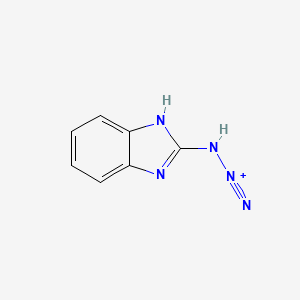|
Name: 1-androstenediol (3-alpha,17-beta-dihydroxy-5-alpha-androst-1-ene)
Type: Androgenic steroid
AKA: N/A

|
|
II. Natural Derivative
Synthetic substance, no natural derivative
 |

|
|
IV. History
1-Androstenediol, a steroid hormone, was first synthesized in the 1980s. It was developed to enhance athletic performance and muscle growth. As a prohormone, it is converted into testosterone in the body, which has led to its use in bodybuilding and sports. Its legality and usage have been subject to regulation and scrutiny, especially in competitive sports.

|
|
V. Legal Information
1-Androstenediol, an anabolic steroid, is regulated as a controlled substance in many jurisdictions due to its potential for misuse in sports. In the US, it is often classified under Schedule III.
US Federal Schedule - III
Schedule III drugs, substances, or chemicals are defined as drugs with a moderate to low potential for physical and psychological dependence. Schedule III drugs abuse potential is less than Schedule I and Schedule II drugs but more than Schedule IV. Some examples of Schedule III drugs are: products containing less than 90 milligrams of codeine per dosage unit (Tylenol with codeine), ketamine, anabolic steroids, testosterone.
Key US Federal Policies:
Controlled Substances Act. Public Law: Public Law 91-513 (text can be found on GovInfo) (https://www.dea.gov/drug-information/csa). Date enacted: October 27, 1970.
|
|
VI. Physical Effects
1-Androstenediol is a steroid hormone used for muscle enhancement. It acts as an upper, promoting muscle growth and strength. Short-term use can enhance physical performance, but long-term use may result in hormonal imbalances and cardiovascular issues. Overdose risks include severe health complications. Safe use involves careful dosing and monitoring. Recent research examines its effectiveness and potential health risks.  |
|
VII. Psychological Effects
1-Androstenediol, an anabolic steroid, impacts mood and aggression through androgen receptors. Immediate effects include mood enhancement and increased aggression, with long-term use potentially leading to psychological issues and cognitive impairments. Research explores its mental health impact and overall safety.
 |
|
VIII. Culture
1-Androstenediol is a steroid hormone used for muscle growth, classifying it as a performance enhancer. Short-term use increases muscle mass and strength, while long-term use can lead to cardiovascular issues, liver damage, and hormonal imbalances. Overdose risks include severe cardiovascular problems, liver toxicity, and reproductive health issues. Safe dosages are controlled and typically prescribed by medical professionals. Recent research highlights its potential for muscle growth but warns of significant health risks. Physical effects include increased muscle mass, elevated heart rate, and potential mood changes.
 |
